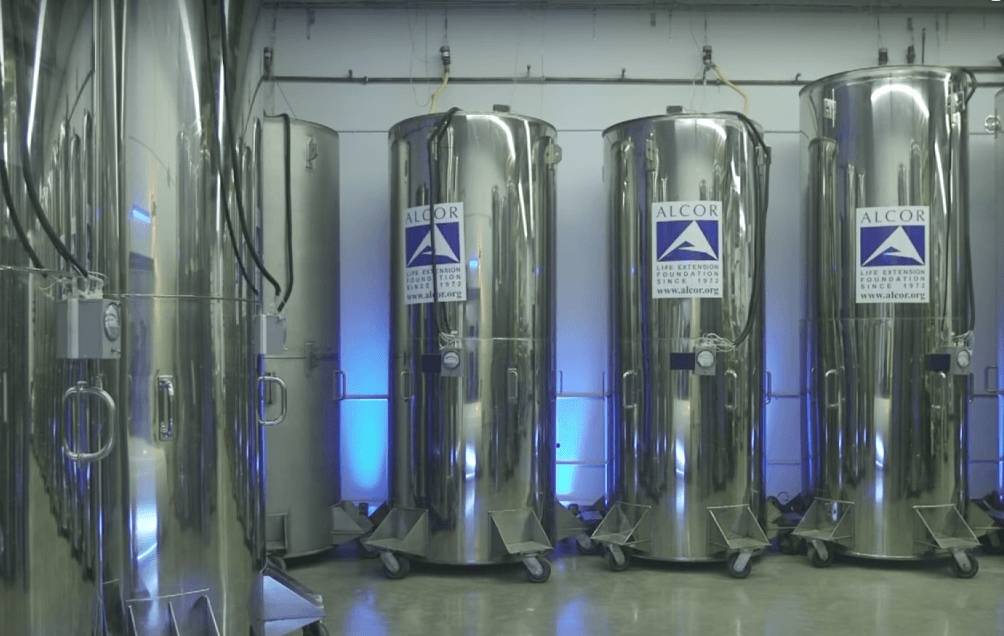
Cryonics, which is usually confused with cryogenics, is the preservation of humans and animals using low temperatures. It is used on humans and animals which cannot be kept alive using modern medicine and the aim is that resuscitation would be possible at some future time.
Preserving people and animals with cryonics – also called cryopreservation – cannot be reversed with the technology we currently have. In other words, we are not able to resuscitate someone if they have been cryopreserved.
Proponents of cryonics argue that although people can be dead according to current medical and legal definitions, they may not be dead in the context of information-theoretic death. Information-theoretic death is the destruction of information within the brain. In his paper, Molecular Repair of the Brain, Ralph Merkle defines information-theoretic death as follows:
A person is dead according to the information-theoretic criterion if their memories, personality, hopes, dreams, etc. have been destroyed in the information-theoretic sense. That is, if the structures in the brain that encode memory and personality have been so disrupted that it is no longer possible in principle to restore them to an appropriate functional state, then the person is dead. If the structures that encode memory and personality are sufficiently intact that inference of the memory and personality are feasible in principle, and therefore restoration to an appropriate functional state is likewise feasible in principle, then the person is not dead.
A person is also considered ‘dead’ in an information-theoretic sense if no future technology could restore their memories and personal identity.
In modern medicine, a person can be considered dead in two distinct ways; through cardiac arrest (when the heart stops beating) and brain death. Clinical brain death (or brain stem death) is usually defined as a condition when all functions of the brain (such as memory and identity) have permanently and irreversibly ceased.
However, we need to re-think this definition of death in light of the fact that people can be “chilled” before surgery, to such cool temperatures that they become technically brain dead. This process is called Deep Hypothermic Circulatory Arrest, or DHCA, and involves cooling the body and stopping blood circulation – it is used in cardiac surgery (on the heart) and in neurosurgery (on the brain). But, to consider these people legally dead would be ethically problematic, since it would imply that there is no obligation to resuscitate them. The bioethicist Arthur Caplan argues that if we have to redefine ‘life’ and ‘death’, this will have serious medical, legal, and ethical implications.
The ethical argument in favour of cryonics is that, if it is used before information-theoretic death, then it can save lives. However, there are some practical issues – if cryonics cannot be applied before information-theoretic death, or if cryopreservation itself causes this irreversible death, then cryonics loses its life-saving potential.
Cryonics, as an idea, is only supported by a minority of scientists, as most regard it with deep scepticism. Since 2012, only 250 people have undergone cryopreservation (which isn’t very many considering that cryonics was first proposed in 1962). Those 250 who were cryopreserved had to be announced legally dead (which itself is a controversial term), otherwise, the procedure could be considered assisted suicide or murder under the law.
The Cryonics Institute (CI) is a non-profit organisation which provides cryonic services. As of October 2012, 505 members of the CI have contracts to be cryopreserved when they are announced legally dead. CI provides cryopreservation of the entire body, whereas other cryonics organisations only offer neuropreservation or the preservation of the person’s head.
Current cryonics technology makes use of a process called vitrification, not freezing. Vitrification is a process in which more than 60% of the water inside cells is replaced with protective chemicals. This essentially prevents freezing during deep cooling, which is necessary, since freezing the body causes ice crystals to form inside cells, and when they expand this results in the rupturing and tearing apart of cell walls. The point of vitrification is that no tissue is damaged.
Cryonics is specifically about preserving humans or animals at low temperatures with the hope of future revival. Cryogenics, on the other hand, is a broader term encompassing the science of producing and maintaining extremely low temperatures.